Categories
- Guitar Playing (4)
- Ham Radio (4)
- Model Flying (18)
Archives
- April 2024 (1)
- July 2022 (1)
- August 2021 (1)
- May 2021 (2)
- August 2020 (7)
- June 2020 (1)
- May 2020 (1)
- October 2019 (1)
- November 2017 (3)
- June 2017 (8)
My Riser V-Tail
Here I want to show you my version of the SIG-Riser model sailplane.
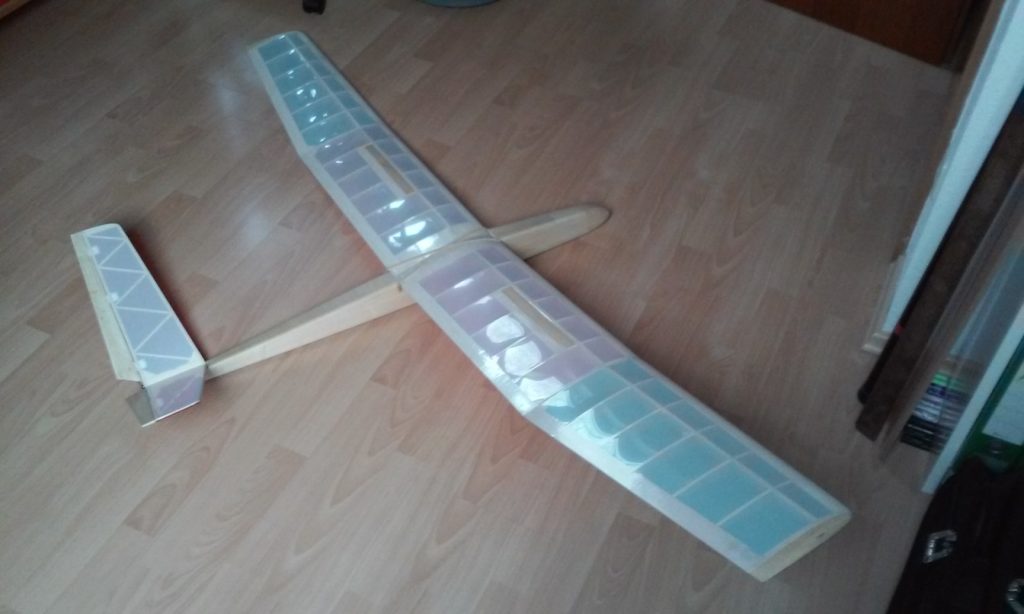
This year, the idea came up in our club, to organize a competition of the R.E.S. class. R.E.S. stands for “Rudder Elevator Spoiler”. This class for simple 2-meter model sailplanes has become extremely popular in Germany. As I wanted to participate in this contest, I had to build an appropriate model. My choice was the “Riser” offered by the SIG company. One reasson for this was the extremely low price for the kit.
The building instruction was straight foreward, so I put the plane together in very short time. When it was time to build the vertical and horizontal stabilizers, I decided to make a change. I was convinced that the normal cross tail would be to heavy. So I changed it to a V-tail. I set the opening angle between the two sides to 120 degrees and extended their length by 15 percent to get enough area in the vertical projection. I hoped that nevertheless enough controllability was given. The maiden flight should show it.
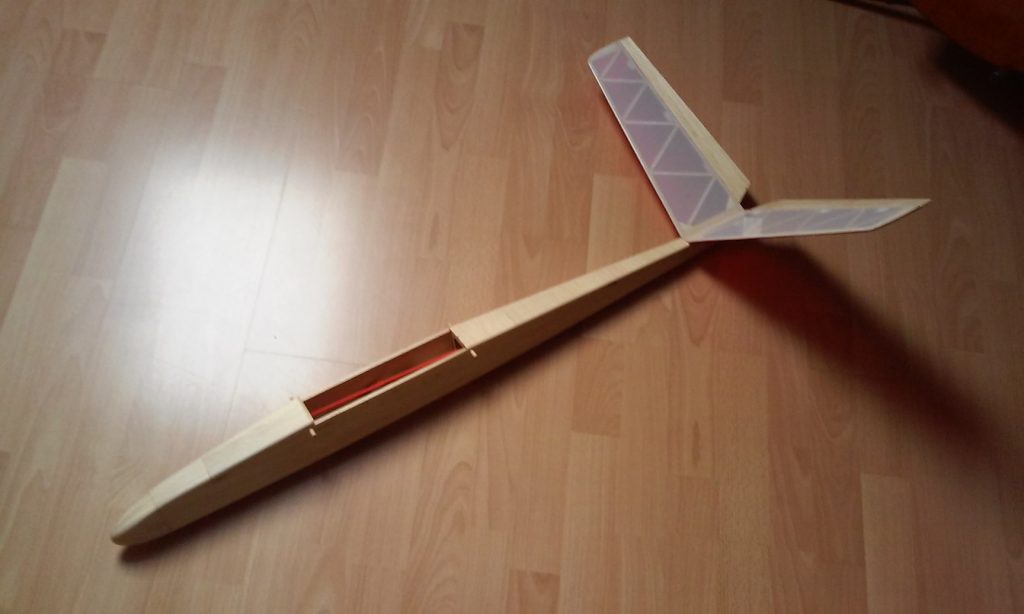
The plans for the model included an extra sheet for the installation of spoilers. Unfortunately, the material for this was not included in the kit. As I wanted to use two separate servos for the two wing sides, I had to think about a different way how to control the spoilers. Now they are hinged at the front edge with plastic tape and pushed up directly by the servo horns. Small magnets hold them down in the retracted position.
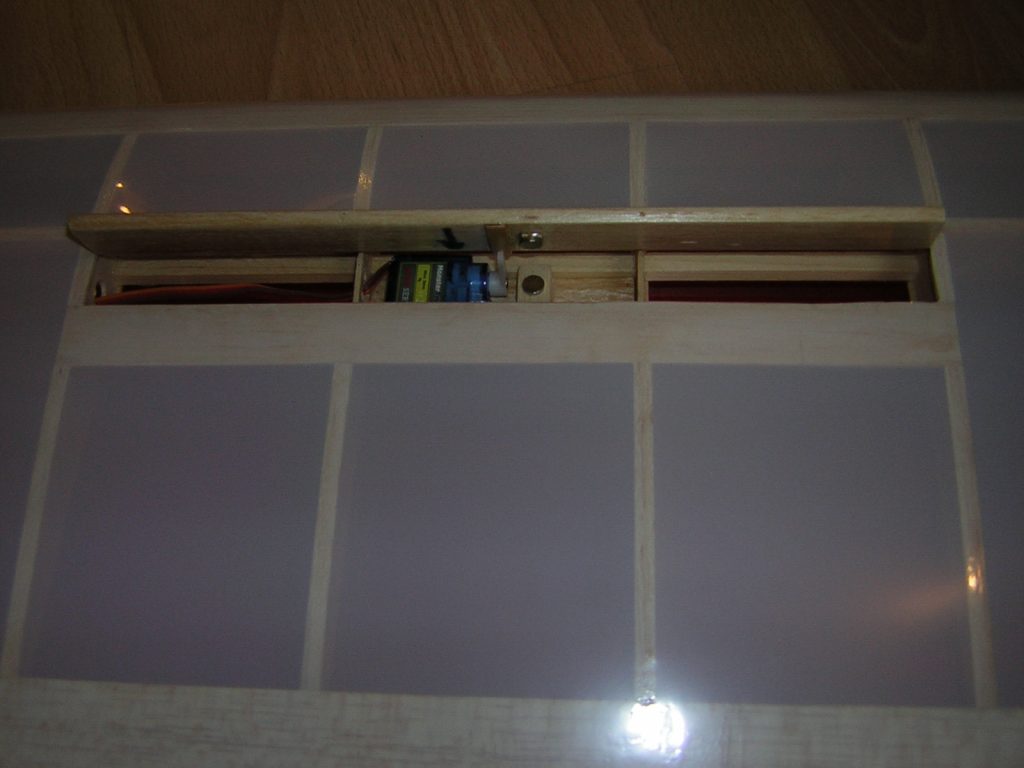
I covered the wing and the tail feathers with transparent OraLight. White on the top and red and blue on the bottom. The fuselage was just painted with clear lacquer. Despite of the lighter tail, a lot of ballast was still needed in the nose of the model to put the center of gravity in the right position. I decided to use a 2-cell LiPo of 2000 mAh combined with a UBEC-device. Now, the total flight weight came out at 630 g (~22 oz). So, this model seems to be more suitable for stronger winds.
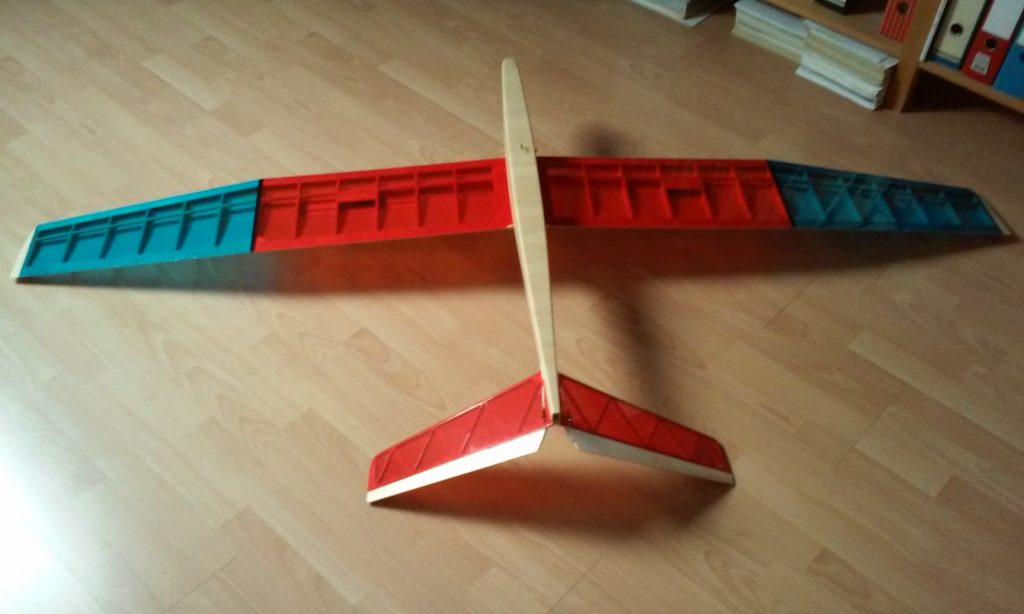
For the high start a special rubber is required, which is extended with a fishing line. For this I made a wooden drum from a kit which was provided by Modellbau Claus Thiele.
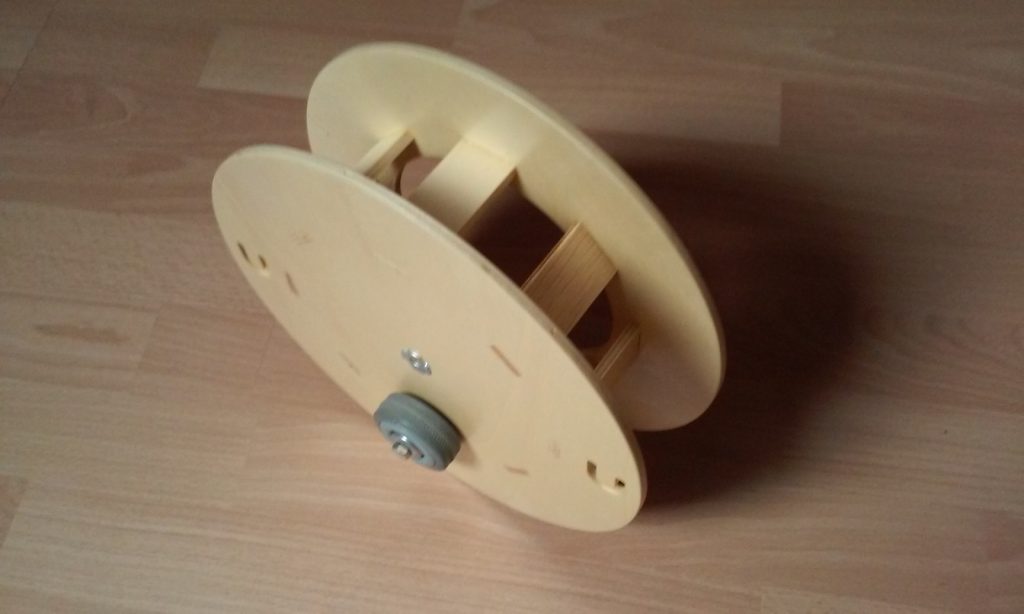
Varioprop Conversion
Here I want to show you, how I converted an old Graupner Varioprop transmitter to 2.4 GHz.
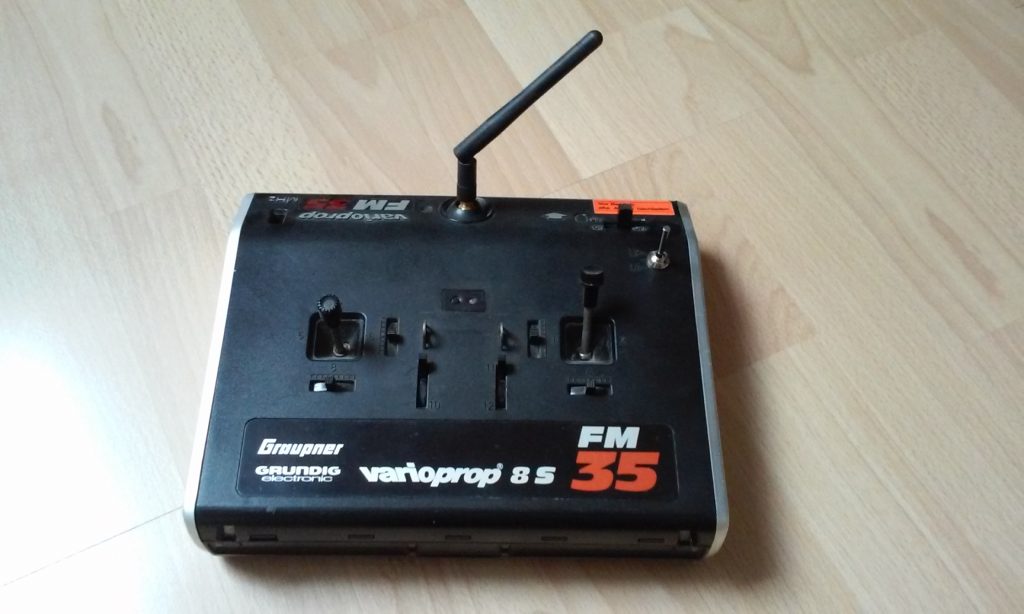
I didn’t want to have another transmitter with all kinds of bells and whistles. My intention was, to make an old transmitter usable again that was laying around in my cupboard. I have other radios that can do everything. On the other hand, I wanted to improve my programming skills for the Arduino microcontrollers.
As I wanted to use this transmitter especially for my new SFC-Stick, I limited the number of controls to four (throttle, rudder, elevator, ailerons). The two extra potentiometers in the center were not yet connected to the controller and the 3-position switch was not used in the program.
First, I removed all the electronic components, the antenna socket and the battery until only the mechanical parts (sticks) remained. Then an RF Module from FrSky (V8HT) was inserted. The new antenna socket was glued in with epoxy. Also, a new charging socket and a new on-off-switch were necessary. The battery is a 2-cell LiPo of 800 mAh which is absolutely sufficient. The transmitter now has a very low weight (670g ~23.6 oz).
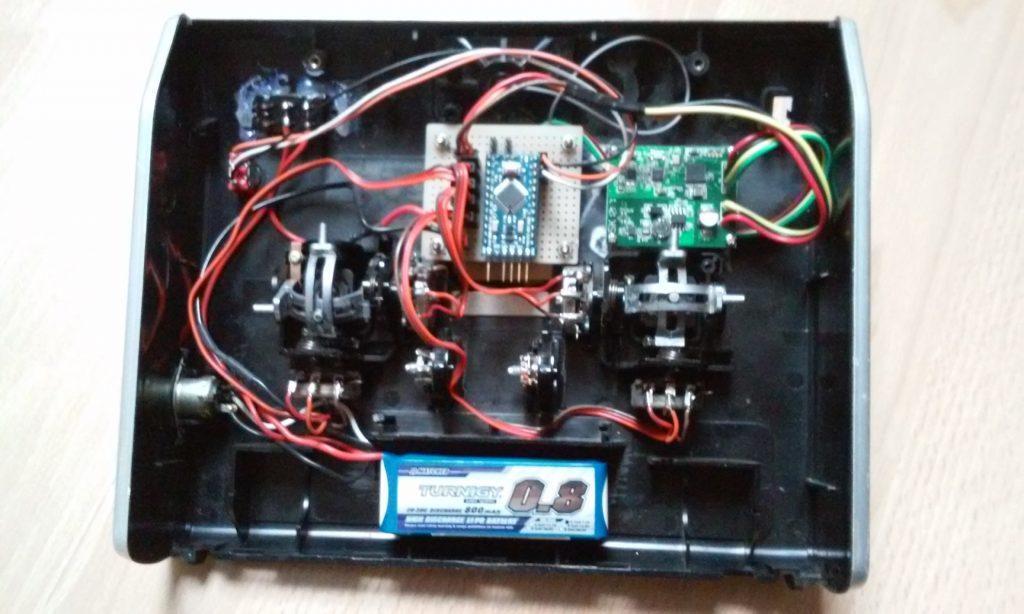
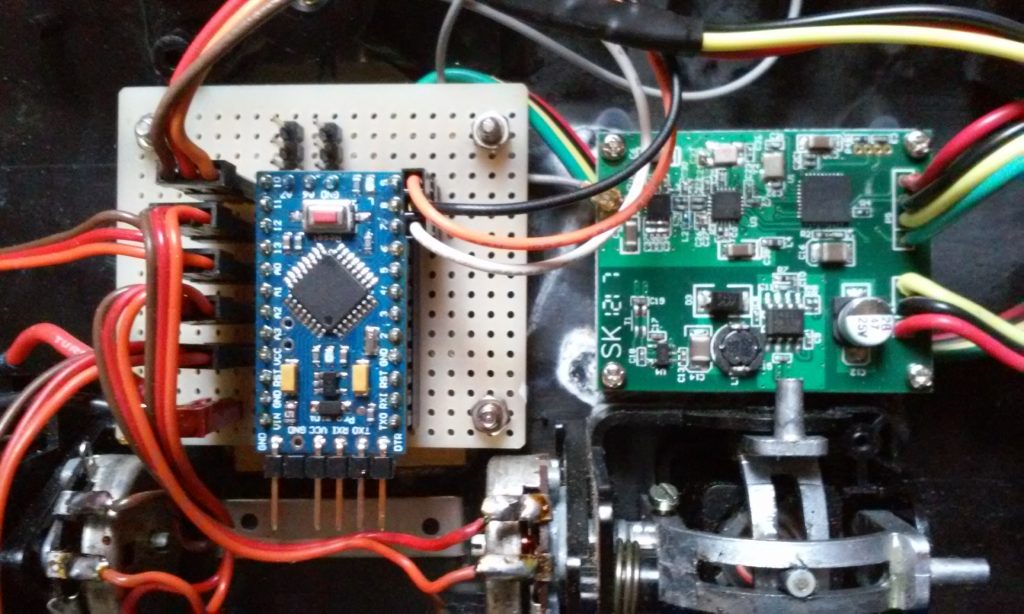
The PPM signal is provided by an Arduino Pro Mini.
You can find my sketch here: rc_encoder_sfc_stick
There is no display or keypad in the transmitter. If I want to change the program, I have to connect the Arduino to my PC and upload a modified sketch.
I use this transmitter specifically for my SFC-Stick model, which I have presented in another post.
My SFC-Stick
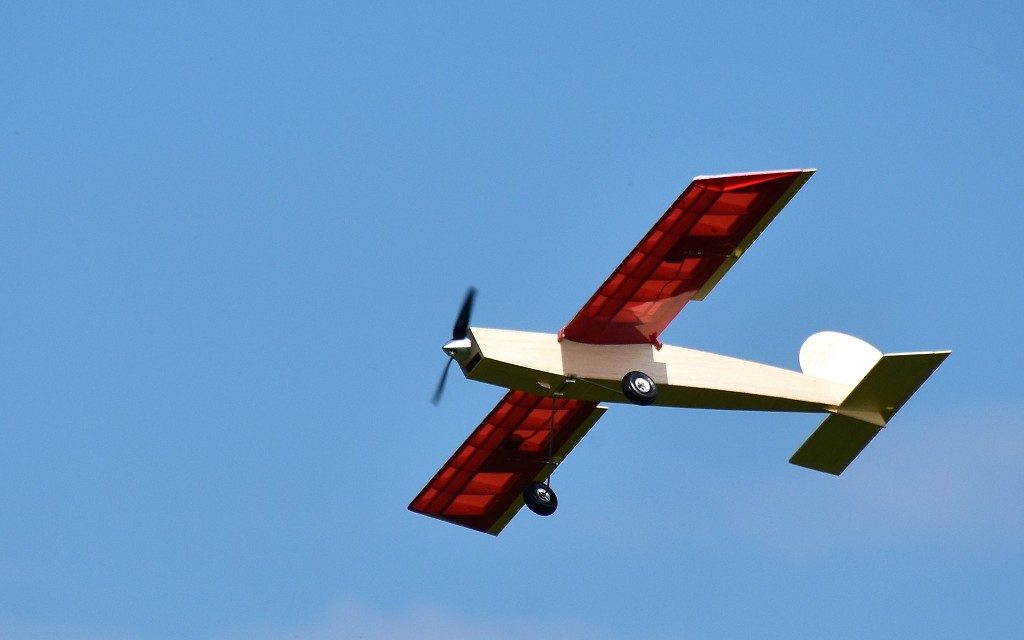
Here I want to show you my version of the Ugly Stick (SFC stands for Sport Flying Club). It was designed by a fellow club member more than twenty years ago as a project for our youth group. He provided some drawings the wing ribs and fuselage frames as milled parts and a stack of balsa wood for the remaining components. At that time, I obtained such a stack of material but never found the time to build the model.
Last year a new competition was devised in our club. We called it the “Fun Cup”. The rules: Within four minutes, as many rounds as possible had to be flown around two turnstiles 40 meters (~131′) apart. Within each round a “touch and go” had to be done in a landing field of 10 meters (~33′) in length. You got additional points for the final landing.
I really wanted to take part in this competition. But until that time, I had only flown gliders and did not have a single model with landing gear. What could I do? In February this year I discovered the material for the Stick in my cellar and started building immediately.
Originally, the wingspan should be 140 cm (~55″), but I decided to reduce it to 112 cm (~44″). The total length of the fuselage is also 112 cm. The wing was covered with transparent OraLight, white on the top and red on the bottom. The fuselage and the tail feathers were just painted with clear lacquer. The model is powered by an electric motor (DYMOND GTX-3546 (910kV)) and a LiPo battery (3s1p, 3300 mAh). The prop size is 11×7. The total flying weight is 1400 g (~50 oz).
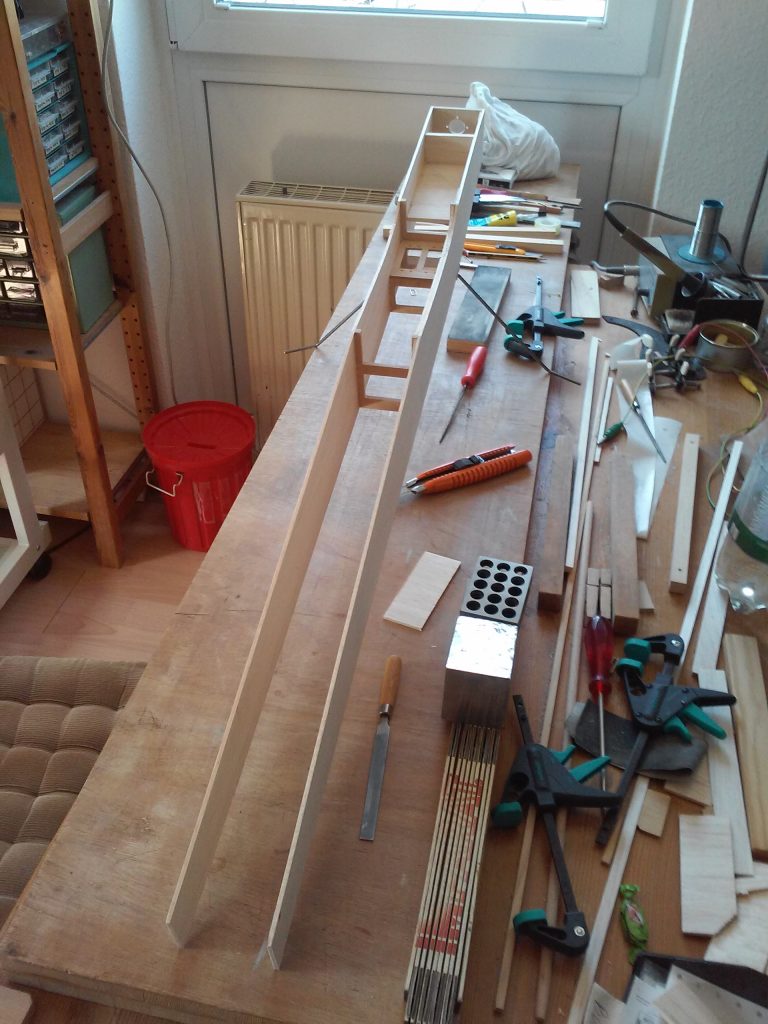
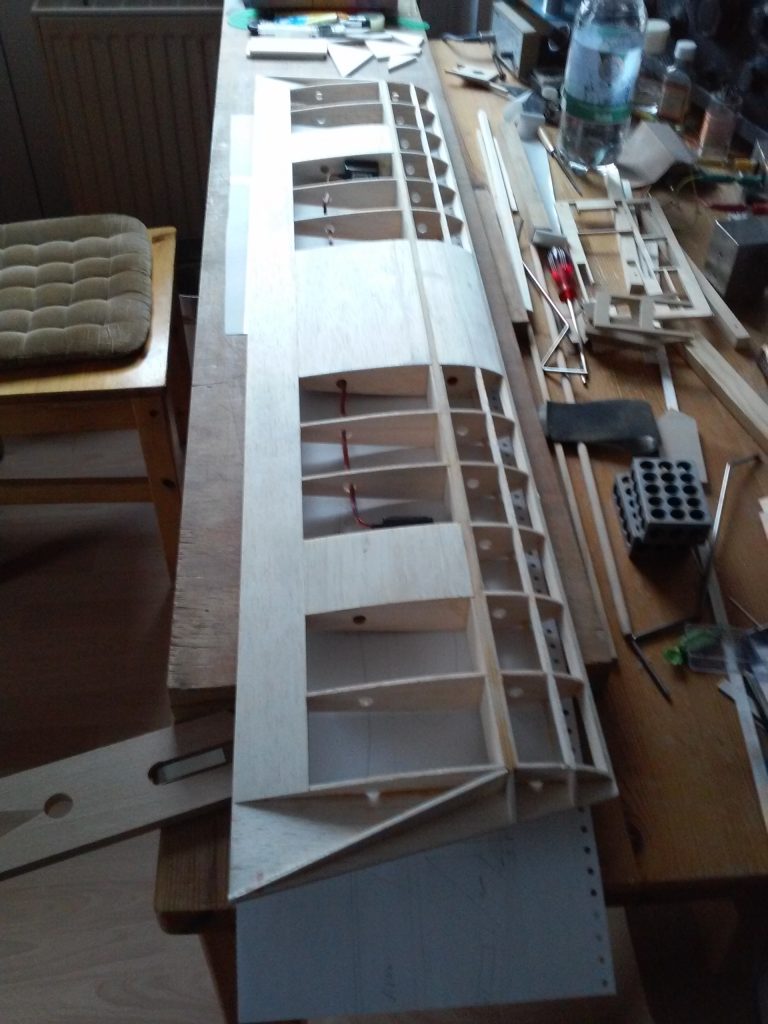
The model flew very well. Since I had little time to train the “touch and go” part, my participation in the competition was not so successful. But most importantly, the model is still intact!
The following picture shows me holding the model after the end of the competition.
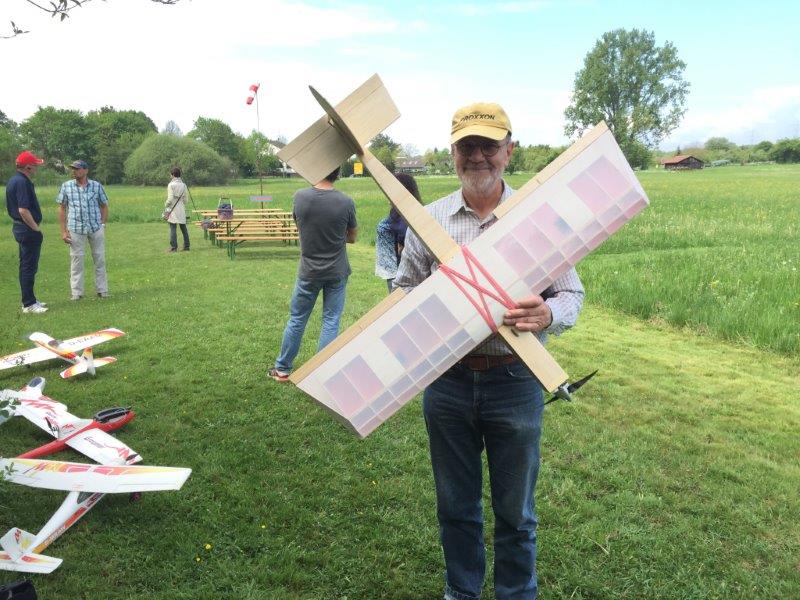
The model is controlled by an old Varioprop transmitter that I converted to 2.4 GHz.